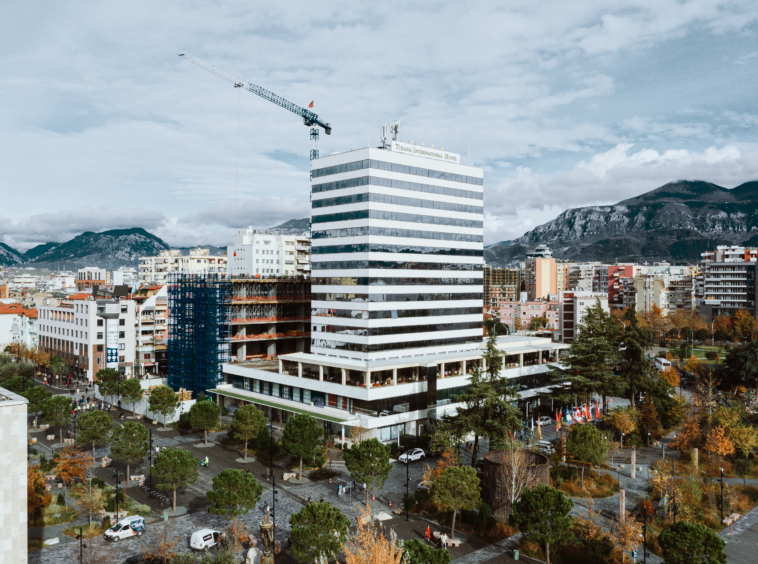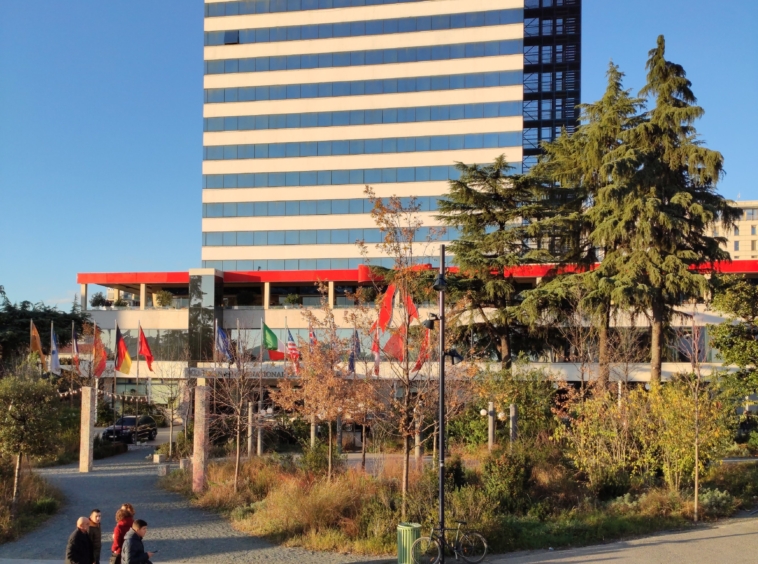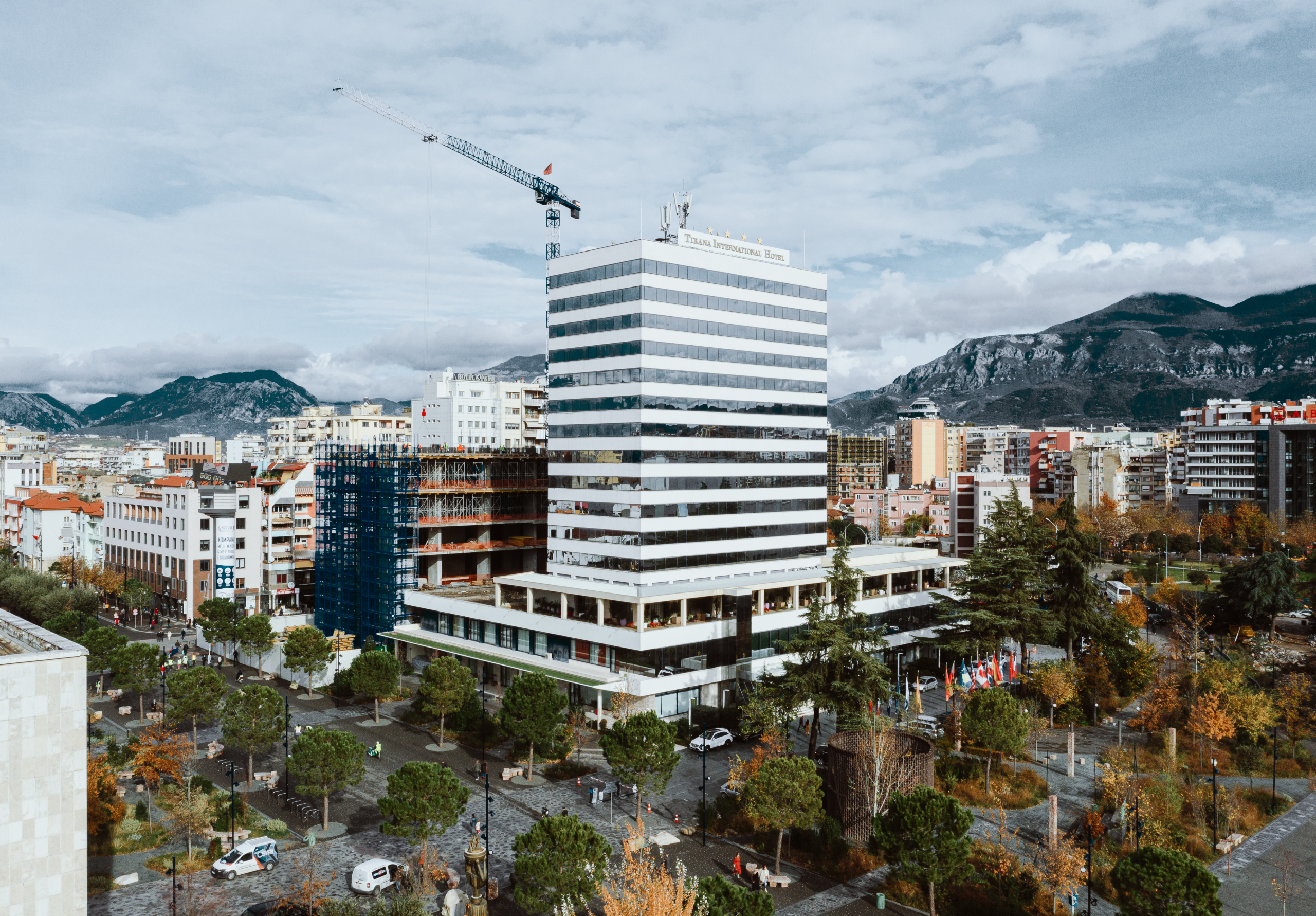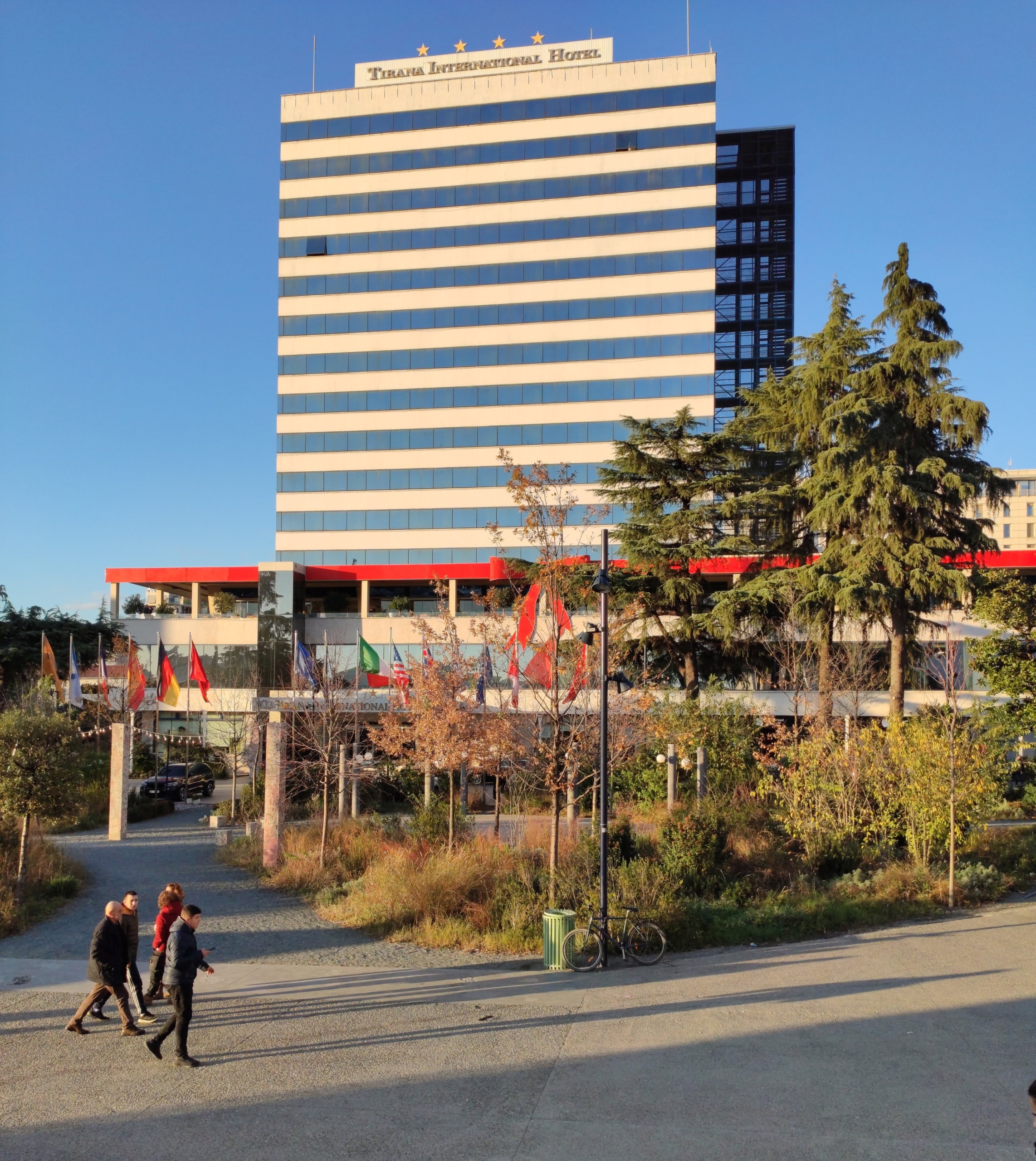Tirana International Hotel
Details
Updated on January 3, 2025 at 7:48 pmInformation
- Author: Valentina Pistoli
- Year Built: 1979
Description
The Tirana International Hotel, located prominently in Skanderbeg Square, is a 15-story building that has played a significant role in the architectural and cultural identity of Tirana. Constructed in 1979 during Albania’s socialist era, the hotel was a groundbreaking project and a symbol of modernity in a time marked by strict architectural and urban constraints.
Architectural Design
Designed by architect Valentina Pistoli, the building introduced a novel architectural style to Albania. It was remarkable not only for its height—being the tallest structure in Tirana during socialism—but also for its minimalist and modernist design. The verticality of the building is broken by horizontal strips of full and empty spaces, creating a dynamic and balanced façade.
The building’s structure was constructed using concrete walls, a technique considered advanced for Albania at the time. Its exterior is clad in white marble, adding a sense of elegance and modernity that contrasted with the often austere and utilitarian aesthetics of socialist architecture.
Functionality and Interior Design
From its inception, Tirana International Hotel was more than just a hotel; it was a multifunctional hub designed to accommodate Albania’s elite and international visitors. Its interior, initially designed with socialist grandeur in mind, was later renovated in the 1990s to reflect contemporary standards of luxury and comfort.
Today, the building offers a wide array of facilities:
- Accommodation: 170 rooms and suites equipped with modern amenities.
- Event Spaces: Conference rooms and ceremonial halls, making it a center for business and cultural events.
- Dining and Recreation: Multiple restaurants and bars, offering fine dining experiences and casual settings.
- Wellness: A swimming pool and spa, catering to relaxation and health-conscious guests.
Cultural and Historical Significance
During its early years, the Tirana International Hotel was a prominent symbol of progress and openness in an otherwise isolated country. Citizens of Tirana affectionately referred to it as the “15-floor” building, emphasizing its status as a unique and towering presence in the cityscape.
It was considered the best hotel constructed during the communist era, often hosting state functions, foreign dignitaries, and notable guests. The building’s height and central location provided an unmatched view of Skanderbeg Square, further solidifying its position as a landmark in Tirana.
Modern Adaptations
In the 1990s, as Albania transitioned into a market economy, the hotel underwent significant renovations to meet the demands of a growing tourism and business sector. Changes to the interior and façade updated its aesthetic and functional appeal while maintaining its original architectural integrity.
Legacy
The Tirana International Hotel remains a vital part of the city’s urban and cultural fabric. It is not only a destination for travelers but also a site of historical and architectural importance. Its combination of modernist design, socialist-era symbolism, and contemporary luxury continues to make it a prominent feature of Tirana’s skyline and a key contributor to its identity as a growing metropolitan center.










